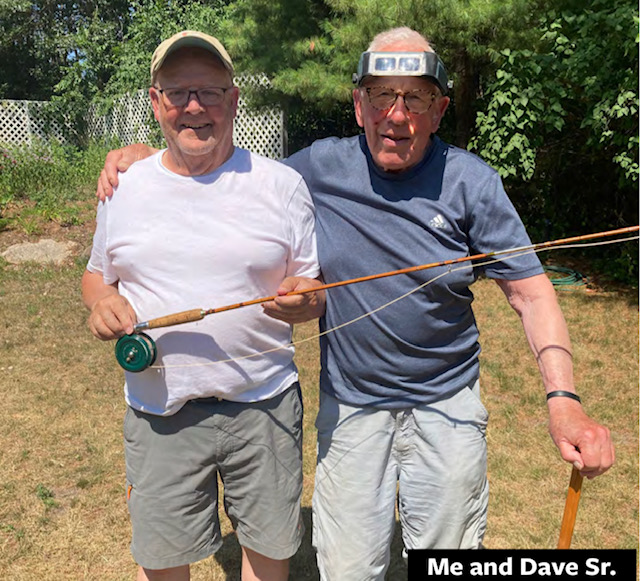One day this past Spring, a FedEx shipment in a triangular box arrived on my doorstep. At first, I was confused as to its origin, and my wife, Suzanne, who in all our years together has become quite familiar with triangular boxes and their contents, quickly asked “Ed, did you order another fly rod?” I had not. Further investigation of the label revealed that the package came from my good friend Ernie Chupp ,who lives in Omaha, Nebraska.
Over time, I’ve shared with Ernie my fervent passion for fly fishing. I’ve mentioned my fondness for older rods and explained how fly rod construction had progressed over time with the advent of modern materials such as fiberglass and graphite, eventually finding favor over bamboo. I was delighted to learn that one of Ernie’s relatives was none other than Ferdinand Claudio, a builder of premier fiberglass fly rods in the 1940s which are still in great demand today by vintage rod collectors—and Ernie has one of Claudio’s rods.
After opening the box, I was surprised to see a vintage bamboo fly rod. It was a three-piece rod with two tips. Each section was cradled in a slotted holder. The rod was in pretty rough condition, but something told me that it had character and qualities that, if paired with a little TLC, might result in a usable fly rod that would provide loads of fishing fun. I needed to find out more about the rod and whether it could be brought back to its nearly original condition.
My next thought? “I need to go out and see the Norlings.” I contacted Dave Jr. and asked if I could bring the rod out to their workshop, if they’d be willing to help me figure out where and when it was made, and if there was a possibility, we could give it a new life.

At the workshop, Dave Sr. took the rod in hand, and asked “what do you want to do with it?” I told him that I would like to fish with it. He gave me a wry smile; I think he was pleased.
At first glance, Senior thought the rod was made in New York, but he couldn’t verify the manufacturer and said he’d need to do some further research. On closer scrutiny we determined that one section was missing some guides, and that a series of narrow thread wraps, which Senior told me were called “intermediates,” were placed along the sections of bamboo for added strength. Many of these wraps were either loose or missing and would need to be replaced.
The Norlings offered that I could come back out to the work shop and they’d help me get started with winding new wraps and attaching new guides. I left the rod so that Senior could do some additional research and determine what else was needed to get it into fishing condition. About a week later I received a note from Dave Jr. telling me that they would be fixing up the rod at no charge. What a surprise! They had found that the rod was indeed made in New York, by a company called Horrocks-Ibbotson (H&I), and they placed its manufacturing date around 1910. Horrocks-Ibbotson was one of America’s largest production rod companies for many years, competing head-to-head with Montague and South Bend. It later became known as the world’s largest manufacturer of fishing tackle.
I soon got another call to come and pick up the rod. Dave Sr. also informed me that I could likely get a reel on Ebay to match up with the rod, and I was able to purchase a wonderful, small,

single-handed reel made by H&I that turned out to be a perfect match for the rod.
When I arrived, Senior handed me the rod. I pulled it out of its rod sock and was astounded. The rod glistened. He had put fresh coats of varnish on it. There were new snake guides where needed, a new stripping guide, and a set of new ferrules. All of the guides and thin intermediate thread wraps were re-done. The reel-seat was re-glued as well. When I put the rod together, I knew that I was handling a treasure. I felt blessed! I showed Senior my vintage reel, and just the sight of it made his day. Next, Senior’s command: “Let’s go cast it.” He felt that the rod could probably handle a 6-weight line, which Dave Jr. quickly spooled onto my vintage reel. First casting honors went to Dave Jr. As I watched, he quickly began to shoot the most wonderful tight loops imaginable, making clear what an excellent caster he is. Then it was Senior’s turn. It was soon evident that Senior hasn’t lost his touch. I followed and was delighted with the feel of the rod loading and unloading and how effortless it was to throw a perfect cast. The three of us reveled in our success.
I want to thank my friend Ernie, whose gift started the whole experience, and Dave Jr. and Dave Sr. Their generosity has provided me with not just another fly rod, but a treasure that will always have a special place in my heart.

